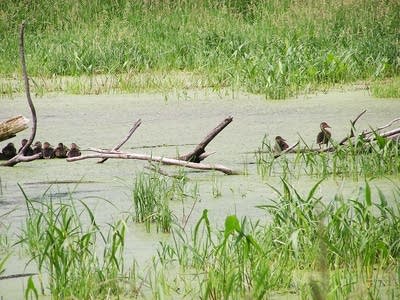U of M economist measures nature's benefits with dollars
Go Deeper.
Create an account or log in to save stories.
Like this?
Thanks for liking this story! We have added it to a list of your favorite stories.

Scientists in Minnesota are trying to do something that may be impossible: put a dollar value on nature.
Nature performs many important functions that benefit humans — not just offering beauty but cleaning water, taming floods and pollinating crops. Some researchers think it's time to put a dollar value on those natural processes.
University of Minnesota economic researcher Steve Polasky is building on ideas first presented in the field of applied economics back in the 1960s. The idea is kind of a merger of ecology and economics to identify services that nature provides, and assign a monetary value to those services.
Polasky's approach, which he calls "full-cost accounting," involves tracking all the consequences of a particular activity, not just the intended results.
Turn Up Your Support
MPR News helps you turn down the noise and build shared understanding. Turn up your support for this public resource and keep trusted journalism accessible to all.
The way he looks at it, nature has assets — he calls it "natural capital" — like minerals and timber. But Polasky said it's time to focus on something less obvious: the processes inherent in nature that provide benefits for people.
"Say the way ecosystems filter nutrients out of water to provide clean water downstream, or to provide habitat for species that we value, either because we fish or hunt them or because we enjoy seeing them or knowing they exist," Polasky said.
First, Polasky identifies how we use nature, then he assigns a dollar value to those services. For example, if wetlands were not filtering water and we had to build more sophisticated water treatment plants, that would cost money. Because we've turned so many wetlands into farm fields, we try to control floods with huge levees — and that costs money.
[image]
This kind of thinking can have practical uses. Polasky calculated that a 10 percent increase in tree cover increases the sale price of an average home by nearly $1,400, or a half-percent of the total value.
One of his studies concluded that when the DNR buys land for conservation, it increases the ecosystem services provided by the land by between $1.70 and $4.40 per $1 invested.
Polasky is a big fan of incentives: he said they can discourage behavior that's harmful to nature, and encourage behavior that helps.
He points to the federal Conservation Reserve Program, an incentive program that pays farmers to convert fragile land from row crops to grasses. That not only improves water quality downstream and provides habitat, but it may even clean the air and provide carbon storage.
Polasky and some colleagues are trying to identify specific consequences of specific actions that farmers are taking in the Minnesota River Valley.
"The science is improving here, but if you can actually demonstrate that causal link, that doing an action here actually leads to these kinds of benefits, the next logical step is could we actually figure out payments that the people who provide these ecosystem services actually get paid for doing so," Polasky said.
Or, conversely, could we design better incentives to prevent harms to ecosystems?
Polasky is just beginning a study of the costs and benefits of proposed copper-nickel mining in northeastern Minnesota — a highly controversial issue, given the claims and counter-claims of advocates and opponents.
While Polasky tries to meld nature and economics, John Pastor approaches economics as a student of nature. And that makes him wary of Polasky's market-based techniques.
"Nature is never going to win — never — if you say, 'what is the dollar value of nature versus payroll?'" said Pastor, who researches and teaches ecosystems ecology at the University of Minnesota-Duluth.
He said we need to flip our thinking, and put nature first. It's impossible to live without nature, so we should re-design our economic systems to protect it.
Pastor has been studying wild rice for several years, including potential impacts pollution from mines may have on Minnesota's traditional wild rice beds. It's one of the hot-button issues related to proposed copper-nickel mining.
He said using his approach, we could decide to have both — the minerals and the environment — as long as we're willing to pay a higher price for copper.
"If we're not willing to pay the price, then we're going to keep chipping away and chipping away and chipping away at nature, and finally sometime in the next lifetime we're going to wake up and say, 'oh shoot, it's all gone; now what are we going to do?'" Pastor said.
According to Polasky's approach, we could avoid that problem if we start now assigning a value to Minnesota's natural resources.



